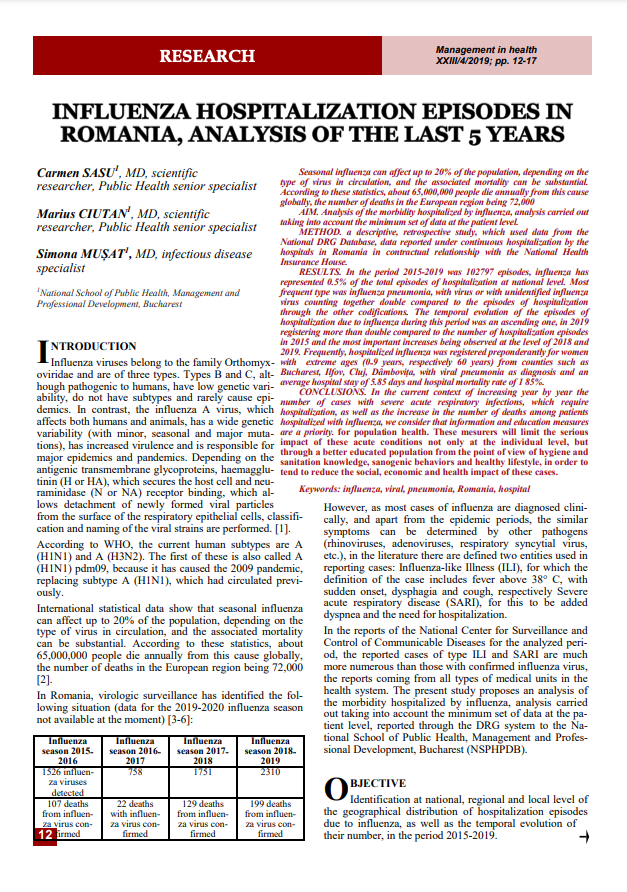Abstract
Seasonal influenza can affect up to 20% of the population, depending on the type of virus in circulation, and the associated mortality can be substantial. According to these statistics, about 65,000,000 people die annually from this cause globally, the number of deaths in the European region being 72,000
AIM. Analysis of the morbidity hospitalized by influenza, analysis carried out taking into account the minimum set of data at the patient level.
METHOD. a descriptive, retrospective study, which used data from the National DRG Database, data reported under continuous hospitalization by the hospitals in Romania in contractual relationship with the National Health Insurance House.
RESULTS. In the period 2015-2019 was 102797 episodes, influenza has represented 0.5% of the total episodes of hospitalization at national level. Most frequent type was influenza pneumonia, with virus or with unidentified influenza virus counting together double compared to the episodes of hospitalization through the other codifications. The temporal evolution of the episodes of hospitalization due to influenza during this period was an ascending one, in 2019 registering more than double compared to the number of hospitalization episodes in 2015 and the most important increases being observed at the level of 2018 and 2019. Frequently, hospitalized influenza was registered preponderantly for women with extreme ages (0-9 years, respectively 60 years) from counties such as Bucharest, Ilfov, Cluj, Dâmbovița, with viral pneumonia as diagnosis and an average hospital stay of 5.85 days and hospital mortality rate of 1 85%.
CONCLUSIONS. In the current context of increasing year by year the number of cases with severe acute respiratory infections, which require hospitalization, as well as the increase in the number of deaths among patients hospitalized with influenza, we consider that information and education measures are a priority. for population health. These mesurers will limit the serious impact of these acute conditions not only at the individual level, but through a better educated population from the point of view of hygiene and sanitation knowledge, sanogenic behaviors and healthy lifestyle, in order to tend to reduce the social, economic and health impact of these cases.

